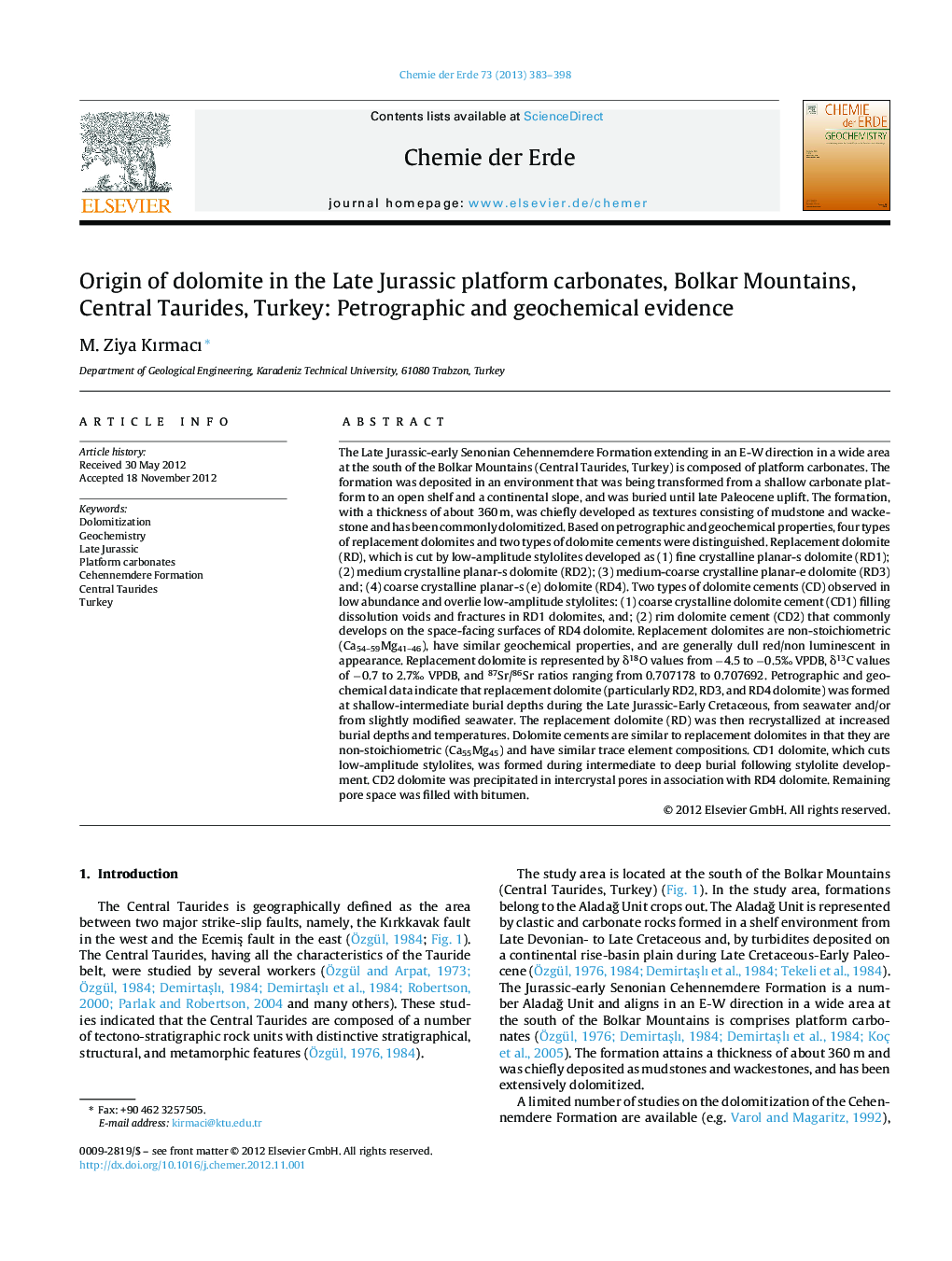| کد مقاله | کد نشریه | سال انتشار | مقاله انگلیسی | نسخه تمام متن |
|---|---|---|---|---|
| 6305880 | 1307334 | 2013 | 16 صفحه PDF | دانلود رایگان |
The Late Jurassic-early Senonian Cehennemdere Formation extending in an E-W direction in a wide area at the south of the Bolkar Mountains (Central Taurides, Turkey) is composed of platform carbonates. The formation was deposited in an environment that was being transformed from a shallow carbonate platform to an open shelf and a continental slope, and was buried until late Paleocene uplift. The formation, with a thickness of about 360 m, was chiefly developed as textures consisting of mudstone and wackestone and has been commonly dolomitized. Based on petrographic and geochemical properties, four types of replacement dolomites and two types of dolomite cements were distinguished. Replacement dolomite (RD), which is cut by low-amplitude stylolites developed as (1) fine crystalline planar-s dolomite (RD1); (2) medium crystalline planar-s dolomite (RD2); (3) medium-coarse crystalline planar-e dolomite (RD3) and; (4) coarse crystalline planar-s (e) dolomite (RD4). Two types of dolomite cements (CD) observed in low abundance and overlie low-amplitude stylolites: (1) coarse crystalline dolomite cement (CD1) filling dissolution voids and fractures in RD1 dolomites, and; (2) rim dolomite cement (CD2) that commonly develops on the space-facing surfaces of RD4 dolomite. Replacement dolomites are non-stoichiometric (Ca54-59Mg41-46), have similar geochemical properties, and are generally dull red/non luminescent in appearance. Replacement dolomite is represented by δ18O values from â4.5 to â0.5â° VPDB, δ13C values of â0.7 to 2.7â° VPDB, and 87Sr/86Sr ratios ranging from 0.707178 to 0.707692. Petrographic and geochemical data indicate that replacement dolomite (particularly RD2, RD3, and RD4 dolomite) was formed at shallow-intermediate burial depths during the Late Jurassic-Early Cretaceous, from seawater and/or from slightly modified seawater. The replacement dolomite (RD) was then recrystallized at increased burial depths and temperatures. Dolomite cements are similar to replacement dolomites in that they are non-stoichiometric (Ca55Mg45) and have similar trace element compositions. CD1 dolomite, which cuts low-amplitude stylolites, was formed during intermediate to deep burial following stylolite development. CD2 dolomite was precipitated in intercrystal pores in association with RD4 dolomite. Remaining pore space was filled with bitumen.
Journal: Chemie der Erde - Geochemistry - Volume 73, Issue 3, October 2013, Pages 383-398
